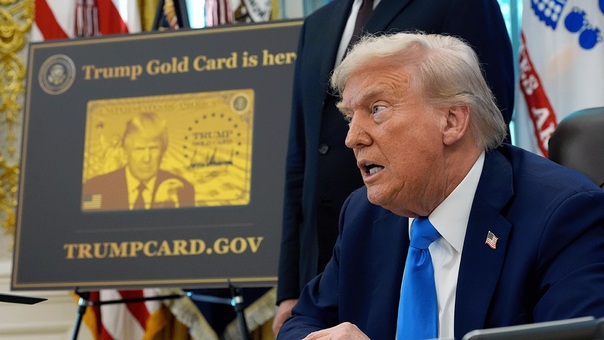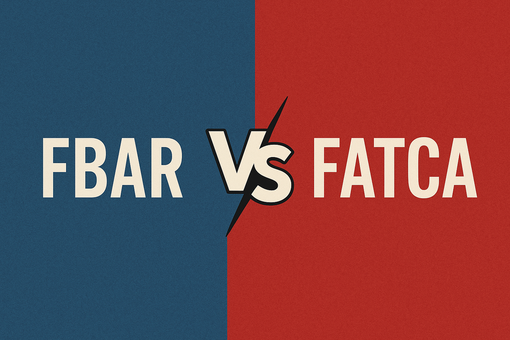Special IRS Provisions for 2020 Due to COVID for Employees & Self-Employed

The COVID-19 pandemic has resulted in numerous administrative and legislative responses, including short-term and a few long-term tax changes that have affected both employees and self-employed taxpayers in significant ways. These changes include filing postponements, tax credits, and other IRS provisions. While some of these changes have been good news, many people are left with lots of questions in mind.
Can I claim sick pay when self-employed? Can you claim tax credits if you're self-employed? What if I'm unable to work? Can I get access to qualified sick leave wages? These are some of the many questions in the minds of employees and the self-employed. This article will help you answer questions about special IRS provisions for 2020 due to COVID.
Who is an eligible self-employed individual?
A self-employed individual is defined as an eligible person who conducts any business or trade as defined in the Internal Revenue Code or a partner in a partnership carrying on a trade or business.
Are self-employed individuals eligible for the qualified sick leave equivalent credit and the qualified family leave equivalent credit?
As an eligible self-employed individual, you qualify to receive qualified sick leave wages or qualified family leave wages. You also qualify for an income tax credit to help offset federal self-employment taxes for any taxable year to your "qualified sick leave equivalent amount" or "qualified family leave equivalent amount."
How is the "qualified sick leave equivalent amount" for an eligible self-employed individual calculated?
If you're an eligible self-employed individual who's unable to work or even telework because:
- You're subject to local, state, or federal quarantine or isolation orders related to COVID-19
- Your health care provider has advised you to self-quarantine due to COVID19-related concerns
- You're experiencing symptoms of COVID-19 and seeking a medical diagnosis
The amount is equal to the total number of days during the taxable year that you can't perform services in any business or trade for one of three reasons above, multiplied by the lesser of $551 or 100% of the "average daily self-employment income" of the individual for the taxable year, or the prior taxable year.
If you're unable to work or telework because:
- You're caring for an individual who is subject to a local, state, or federal quarantine or isolation order related to COVID-19 or one who their doctor has advised to self-quarantine due to COVID-19-related concerns
- You're caring for a child if the child's place of care or school has been closed or the childcare provider is unavailable due to COVID-19 precautions
- You're experiencing any other substantially similar condition specified by relevant authorities
The amount is equal to the total number of days during the taxable year that you can't perform services or do business for one of the reasons above, multiplied by the lesser of $200 or 67% of the "average daily self-employment income" of the individual for the taxable year, or the prior taxable year. You have a maximum of ten days to take into account when determining the qualified sick leave equivalent amount. The days taken into account must fall between April 1, 2020, and ending March 31, 2020.
How is the "average daily self-employment income" for an eligible self-employed individual calculated?
This is an amount equal to their total net earnings for the taxable year, or prior taxable year, divided by 260. The net earnings are based on the gross income that you derive from your trade or business minus the necessary expenses.
How is the "qualified family leave equivalent amount" for an eligible self-employed individual calculated?
This is an amount equal to the number of days (max 50) during the taxable year that you can't perform services for which you would be entitled to paid family leave (if you were employed by an eligible employer other than yourself) multiplied by the lesser of $200 or 67% of your average daily income for the tax year, or the prior taxable year.
Can a self-employed individual receive both qualified sick or family leave wages and qualified sick or family leave equivalent amounts?
Yes, but the amount is reduced by the qualified sick or family leave wages. That means that if you're entitled to a refundable credit for a qualified sick leave equivalent amount and also receive qualified sick leave wages as an employee, the amount for which you can claim a tax credit is reduced if it exceeds $2000 or $5110 in the case any option is paid for sick time.
Additionally, if you're entitled to a refundable credit as an employee, the qualified family leave the equivalent amount you may claim as a tax credit is reduced to the extent that both sums exceed $10,000.
Note: The COVID-related Tax Relief Act of 2020 extended the period during which Eligible Employers may provide paid leave for which they claim tax credits to include periods of leave taken between January 1, 2021, and March 31, 2021.
Example: Let's assume as an eligible employee, you receive $4000 in qualified sick leave wages comprising of:
- $3000 in qualified sick leave wages
- $1000 in 1000 in qualified sick leave wages
In addition to that, as a self-employed individual, you're also eligible for a $3300 qualified sick leave equivalent credit comprising of:
- $2500 in qualified sick leave equivalent credits
- $800 in qualified sick leave equivalent credits
This means that you have to reduce the $3300 qualified sick leave equivalent credit for which you're eligible by $2190, which comprises of:
- The excess of the qualified sick leave wages and qualified sick leave equivalent amounts over $5110 (that is, $390) plus
- The excess of the qualified sick leave wages and qualified sick leave equivalent amounts $2000 (that is, $0) plus
- The remaining excess of the total leave credits to which you're entitled as either an employee or a self-employed individual over $5110 (that is, $1800)
In this case, you can also claim a qualified sick leave equivalent credit of $1110.
Do self-employed individuals need to account for wages excluded or compensation excluded when determining the amount by which to reduce their self-employed equivalent leave credit?
Yes. The Families First Coronavirus Response Act (FFCRA) reduces the qualified sick leave equivalent amount for which you may claim a tax credit to the extent that the sum of the qualified sick leave equivalent amount and any other amounts exceed the applicable thresholds. This also applies to qualified family leave equivalent amounts exceeding $10,000.
Therefore, when determining the amount by which to reduce their self-employed equivalent credits, you should account for wages excluded or compensation excluded.
How does a self-employed individual claim the credits for qualified sick leave equivalent amounts or qualified family leave equivalent amounts?
The refundable credits are claimed on the self-employed individual’s Form 1040, U.S. Individual Income Tax Return PDF. That means you will claim tax credits for periods of leave taken between April 1, 2020, and December 31, 2020, as well as between January 1, 2021, and March 31, 2021.
How does a self-employed individual determine the sick and family leave equivalent tax credit that he or she may claim?
You can do so by completing Form 7202, Credits for Sick Leave and Family Leave for Certain Self-Employed Individuals. To complete the Form 7202, if you’re also an employee you’ll need any amount of qualified sick and family leave wages that your employer reported on the Form W-2, Wage and Tax Statement PDF. For more information, see Notice 2020-54 PDF.
How does a self-employed individual elect to use prior year net earnings from self-employment income to determine average daily self-employment income for purposes of the credits for qualified sick leave equivalent amounts or qualified family leave equivalent amounts?
By indicating this election when filing your 2020 or 2021 Form 1040.
How can a self-employed individual cover his or her qualified sick leave equivalent and qualified paid family leave equivalent amounts before filing his or her Form 1040?
By taking into account the credit to which you’re entitled and will claim on Form 1040, U.S. Individual Income Tax Return PDF, in determining required estimated tax payments. This means that you can effectively reduce payments of estimated income taxes that you would otherwise be required to make if you were not entitled to the credit on the Form 1040 PDF.
You may defer the payment of 50 percent of the social security tax imposed on net earnings from self-employment income for the period beginning on March 27, 2020, and ending December 31, 2020. You may defer these taxes in addition to the credits for qualified sick leave equivalent amounts or qualified family leave equivalent amounts. Take into account the credits in addition to any amount of self-employment tax you plan to defer in determining required estimated tax payments.
Can an independent contractor who generally performs services for multiple clients as a nonemployee claim the tax credit with regard to the lost services due to COVID-19?
Yes. If you’re an independent contractor who generally performs services for multiple clients as a non-employee, you’re self-employed and eligible for the tax credits for days you were not able to work or telework for reasons related to COVID-19. For more information, see Self-Employed Individuals Tax Center.
Can a partner in a partnership claim the tax credits?
Maybe. A partner in a partnership is a self-employed individual if the partner’s distributive share constitutes net earnings from self-employment or if the partner receives guaranteed payments for his or her services. If the partner is a self-employed individual and is not able to work or telework for reasons related to COVID-19, the partner is eligible for the tax credits.
Can a self-employed individual use the Form 7200 to apply for an advance of the tax credits?
No. Form 7200, Advance Payment of Employer Credits Due to COVID-19 PDF, is only available for employers that file Form 941, Employer's Quarterly Federal Tax Return PDF, or certain other employment tax returns. However, you may reduce payments of estimated income taxes equal to the credit to which the individual is entitled.
For more information, see here.
Does an eligible self-employed individual who is allowed a credit for the qualified sick leave equivalent amount or a credit for the qualified family leave equivalent amount include any amount of these credits in gross income?
No, the amount of the credits allowed are not included in your gross income.
How should a self-employed individual substantiate eligibility for tax credits for qualified leave wage equivalents?
You should maintain documentation establishing your eligibility for the credits as a self-employed individual. That documentation should be similar to the documentation that employers claiming the credits for qualified leave wages should maintain under “How Should an Employer Substantiate Eligibility for Tax Credits for Qualified Leave Wages?”.
May a nonresident alien (NRA) claim the self-employed equivalent credits?
Yes. The qualified sick leave equivalent credits and qualified family leave equivalent credits, respectively, are available to NRAs who otherwise meet the requirements to claim the tax credits.



